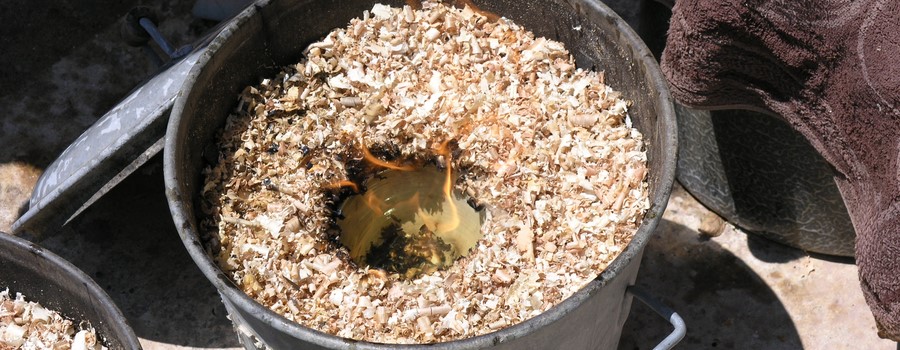Welcome

Patrice Rouby
opens 1976 his studio "Les Grès de Souspierre" in an old farmhouse attached to a factory called "Le Bridon" in Souspierre near Dieulefit in the Drôme district. He builds a gas downdraught kiln and experimented with high temperature glazes using local minerals, ochre, natural oxides and ashes ( ferns, plane, lavender etc) to obtain warm colours at stoneware temperature. He builds a gas downdraught kiln and experimented with high temperature glazes using local minerals, ochre, natural oxides and ashes ( ferns, plane, lavender etc) to obtain warm colours at stoneware temperature. He produces functional ware using earth colours as well as unique studio pieces in stoneware and porcelain with overgraze. Every year some students of all nationalities have been welcomed to learn in his studio and many have become potters later in life.1978 - Patrice makes his first raku firing with students.
1985 - He meets Barbara Weibel and together they begin raku firings incorporating new ideas into their work. As part of their work Barbara and Patrice organize pottery workshops for groups of adolescents from Lich ( a German town linked to Dieulefit) coordinated by Charly Grosch. They are also visited by women potters from Shipibo, Peru. They attend painting workshops organized by the German artist Ena Lindenbaur. They give Raku demonstrations opening their studio to the public.
1995 - The ruins of the Bridon factory are pulled down making way for a new road, the D540 which connects Montélimar to Dieulefit. The construction of the new road in 2001 greatly affected the lives of the two artists.
1996 - A retrospective exposition is organized to celebrate the 20 years of the Bridon pottery. In their research the artists are inspired by journeys to Egypt, Mexico, India, Nepal and Japan.
For some years Barbara and Patrice have been stimulated by their work with Japanese ceramicists.
Knowledge of Japanese culture has helped develop new approaches to their practice through simplicity and strength.
Knowledge of Japanese culture has helped develop new approaches to their practice through simplicity and strength.
Barbara has great interest in writings of different civilisations. She includes calligraphies in her work.





